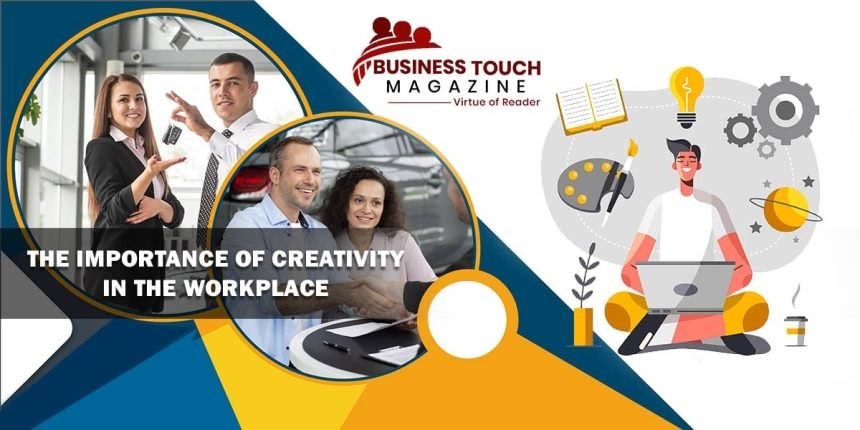Being well-organized, focused, and efficient are the bedrocks of success in every endeavour. Creative thinking, however, must not compromise these fundamental principles. Contrarily, the ability to think creatively is increasingly valued in the business world, both by individuals and by teams.
Furthermore, nine of the top 10 abilities that will define the world in 2020 and beyond are directly tied to creativity, according to the World Economic Forum. Being creative boosts problem-solving abilities in addition to boosting self-assurance and teamwork.
On the other hand, that’s not all. Below are some ways in which original thought may help your company succeed.
1. It Goes Hand-in-Hand with Innovation.
Novelty and practicality are essential for any innovation to succeed. Creativity is essential for coming up with new and interesting ideas, but not all of them can be implemented in the real world. However, novel solutions can’t be developed without creative thinking.
2. Leads to Productivity.
If both creativity and productivity are encouraged in the workplace, then both will flourish. Therefore, these are some of the ways in which imagination may boost efficiency:
• Reduces the likelihood of repeating ineffective strategies. Having a regular schedule is fine. However, you need sometimes switch things up and challenge yourself to grow. If you do this, you’ll be exposed to new points of view.
• benefits the larger issue at hand. When you foster an environment that encourages original thought, you and your staff will be better equipped to take the long view and devote resources to problems that will have a lasting effect on the business. Employees are more productive, and businesses prosper, when they can use their time and energy to solve strategic, rather than tactical, challenges.
• As workers are inspired to think beyond the box, they will bring positive change to their workplaces. The ability to make a real impact in one’s job is a powerful motivator. No one wants to feel like a robot that goes through the motions of life without feeling like their efforts matter.
• It stirs very strong feelings in people. Work without enthusiasm is boring, and that’s particularly true for business owners and innovators within large organizations. However, there are always some that need a little more push to really become fired up about what they’re doing for a living. Employees in every department or position may benefit from taking part in the creative process.
• We can reduce the likelihood of failure if we encourage inventiveness. Fostering creativity requires providing people with the safety to experiment and make mistakes. An atmosphere of failure dread paralyzes creativity and stifles the exchange of new ideas. When we’re scared, we stop thinking outside the box, which makes it harder to discover better methods of doing things like increasing productivity, reducing waste, and coming up with innovative new goods.
3. Provides Adaptability.
Changing your company strategy may not always be essential when you use creativity to solve problems. If you want to boost the productivity of your business, you may, for instance, create brand new goods and services. But don’t dismiss an idea just because it seems too little to solve a big issue.
The business environment is ever-evolving, thus innovative approaches are essential for success.
4. Growth Depends On It.
One of the biggest roadblocks to a company’s development is the mistaken belief that there is only one solution to a problem.
Because it’s human nature to want to handle every new scenario in the same manner we’ve handled the other ones, it’s simple to slip into cognitive fixedness. However, every circumstance is unique in its own way.
Business leaders might become stuck in a rut if they don’t take the time to learn about their environment, encourage innovative thinking, and put their discoveries into practice.
5. The Skill Is In Demand.
Healthcare and manufacturing, two of the most successful sectors, place a premium on originality and ingenuity. Why? Mostly because of how difficult problems are in every sector.
Methods for Fostering Imagination at Work Clearly, therefore, the ability to think creatively is crucial. But how can it be fostered specifically in the workplace?
1. Schedule Opportunities For Creative Thinking.
It’s easy to forget about creative problem solving if we don’t schedule time for it, as CIO’s Nathan Rawlins points out. Since there will always be more things to do and appointments to schedule, it’s crucial that we schedule time to be creative.
Some of the most notable enhancements to our product lineup are the direct consequence of hackathons. Teams invest a lot of time (often between two and three days) in brainstorming, teamwork, and trying out novel approaches. To paraphrase Rawlins: “The outcomes are wonderful features that contribute value to the product and the organization.” As an added bonus, “These events enhance morale and show our dedication to creativity and innovation.”
2. Instill Autonomy.
If you give your team more freedom and responsibility, they will likely come up with more ideas and feel better about their own abilities.
As a result, you may be able to step back from micromanaging and let your team operate more autonomously. For the most part, you let your team decide what should be discussed during private meetings.
3. Implement Flexible Work Hours.
In certain cases, employees may be able to do their duties from the comfort of their own homes provided they are allowed to do so remotely. When workers are able to work from home, they are able to focus better, generate more creative ideas, and experience less stress.
Set firm limits and rules to maintain domestic efficiency. in addition to arranging a timetable that can be adjusted to meet the needs of different managers, teams, and the business as a whole.
4. Don’t Worry About “How.”
By jumping the gun on implementation, “leaders unwittingly damage their team’s creativity,” argues Lisa Guice of Lisa Guice Global-Vision, LLC. “The quickest way to kill the creative process is to demand tactical answers in addition to creative ideas from your team.”
This not only stifles innovation, but it also changes the culture of the workplace to one of “producing while editing,” which leads to less productivity from each employee.




